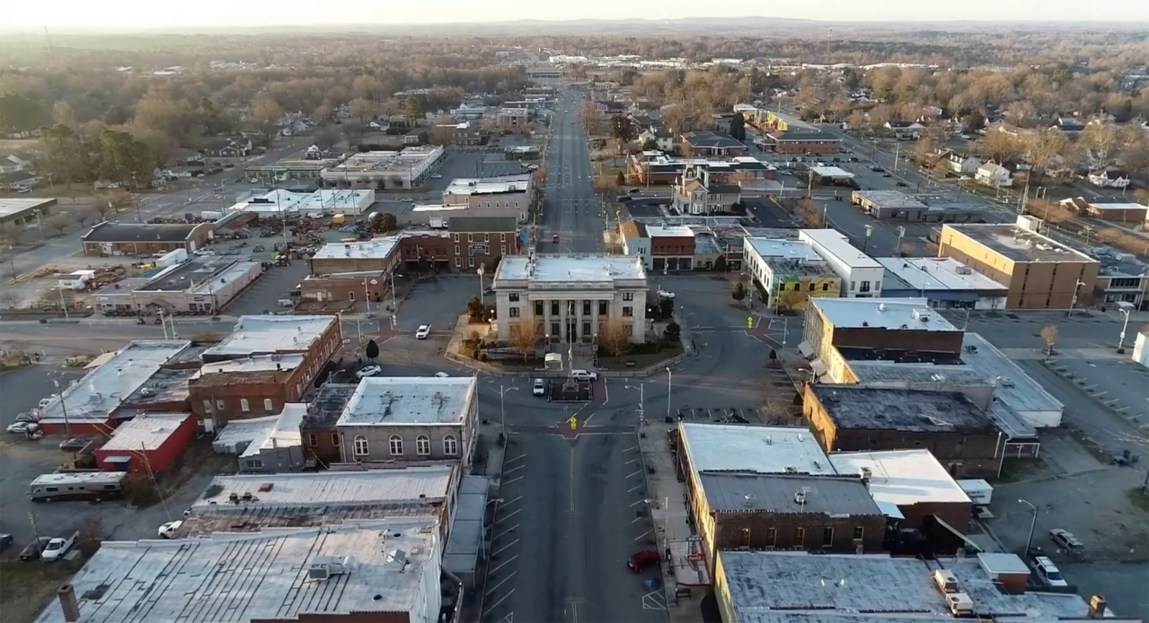Last summer, as thousands of people around the country poured into the streets to express their grief and fury at the death of George Floyd and so many other Black people killed by police and vigilantes, I opened a file of a long-closed court case.
The complaint that launched the case said the Alamance County Sheriff’s Office, under the direction of Terry Johnson, “intentionally discriminates against Latino persons in Alamance County by targeting Latinos for investigation, detention, and arrest, and conducting unreasonable seizures and other unlawful law enforcement actions.”
Sheriff Johnson has long been the most visible representative of the local power structure in Alamance County, North Carolina, a place where the governing board is all-white, where Black people still endure racial slurs in grocery stores, and where a marble statue of a Confederate soldier looms over the downtown square of the city of Graham, the county seat. A tireless political operator, Johnson has served as the county’s top law enforcement official since first being elected in 2002. So dominating is his presence that supporters and opponents alike refer to Graham as “Terry’s Town.”
Johnson denied the racial profiling allegations and insisted he was not racist. In a deposition, a U.S. Department of Justice attorney asked about his use of racial slurs. He said he hadn’t used the N-word, for example, since he was 10 or 11. Johnson won the case in federal district court, then settled with the Obama administration following an appeal.
I was curious about the case’s legacy. Would it shape the course of protest now?
I opened a document containing some pages of a deposition of Johnson. A question near the end of page 289 caught my attention.
“Have you ever in your life attended a meeting of the Ku Klux Klan?”
The Klan’s history in Alamance County had become a central issue for last summer’s protesters, who chanted the name Wyatt Outlaw along with George Floyd, Breonna Taylor and Ahmaud Arbery. I learned that the KKK lynched Outlaw in 1870 in Graham’s Court Square.
Johnson answered the government lawyer: “No, sir — well, I’ll take that back. Yes, I have. I was in the Greensboro Klan-Nazi Shootout as an SBI agent. I have done surveillance at Klans meeting” …
The page cut off. Page 290 of the deposition was nowhere in the court file.
Johnson’s answer raised questions about his role in what’s commonly known as the Greensboro Massacre, an attack by Klansmen and Nazis on a Communist-led march in 1979 that left five people dead. At the time, Johnson worked for the North Carolina State Bureau of Investigation, whose participation in the day’s events, not to mention its surveillance of radical groups before and after, has not been fully revealed despite extensive civil litigation and a truth and reconciliation commission.
I made it my mission to find out more.
So began a monthslong exploration of a century and a half of Southern history. I hoped to uncover the throughlines to the present in a deeply divided region.
As election season ramped up in the fall, visual journalist Julia Wall joined me. We spent hundreds of hours with people whose affiliations ranged from defenders of the Confederacy to the New Black Panther Party.
We interviewed activists, business owners, current and former members of law enforcement, extremism experts, people detained in the county jail and a descendant of Outlaw.
A lot of reporting took place in hostile environments. We were threatened with arrest, harassed and pepper-sprayed. Our colleague, visual journalist Jessica Koscielniak, braved tear gas and a violent crowd at the U.S. Capitol insurrection in January to track down and interview a main figure in the story.
To fully answer the question posed in the deposition, we needed to talk to Johnson, but he wasn’t having it. His spokesperson ignored our inquiries and refused to even add us to the press release distribution list. When we showed up for a news conference that we had learned about through attorneys, a woman at the door told us the room was full. We then watched three more journalists walk in. After one of them pointed out that we had been kept out, the woman who had initially barred us allowed us inside. It was as though the earlier interaction had never happened.
Eventually, after I called some of Johnson’s colleagues from the 1970s, he agreed to sit down for an interview. Julia would later be given a 30-minute on-camera interview with him in his office. For the first time since Graham became the center of one of the most enduring Black Lives Matter protest movements in the country, he gave his perspective publicly: “I am not a racist,” Johnson said, “… and I am certainly not a white supremacist.”
The result of this monthslong effort is “Sound of Judgment.” We hope you read, watch and share this work.

















